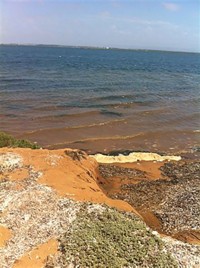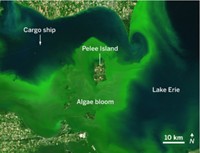Advertisement
Grab your lab coat. Let's get started
Welcome!
Welcome!
Create an account below to get 6 C&EN articles per month, receive newsletters and more - all free.
It seems this is your first time logging in online. Please enter the following information to continue.
As an ACS member you automatically get access to this site. All we need is few more details to create your reading experience.
Not you? Sign in with a different account.
Not you? Sign in with a different account.
ERROR 1
ERROR 1
ERROR 2
ERROR 2
ERROR 2
ERROR 2
ERROR 2
Password and Confirm password must match.
If you have an ACS member number, please enter it here so we can link this account to your membership. (optional)
ERROR 2
ACS values your privacy. By submitting your information, you are gaining access to C&EN and subscribing to our weekly newsletter. We use the information you provide to make your reading experience better, and we will never sell your data to third party members.
Environment
Recalculating Water Treatment Plants' Nitrogen Impact
Water Pollution: Bioavailable nitrogen levels may jump after wastewater leaves treatment plants and hits saltier rivers
by Naomi Lubick
July 9, 2010

Nitrogen compounds in the runoff from wastewater treatment plants can feed microbes in nearby ocean ecosystems, fueling oxygen-depleted dead zones and toxic algal blooms. A new study of how the runoff's chemistry changes as it moves toward the ocean (Environ. Sci. Technol. DOI: 10.1021/es101115g) suggests that plants may release more microbe-friendly nitrogen than researchers previously thought.
Bacteria and phytoplankton feed on inorganic nitrogen molecules released in treated wastewater, such as ammonium (NH4+) and nitrite ions (NO2-). Large fluxes of these nutrients into coastal estuaries boost microbial growth, which can lead to dead zones when the organisms consume most of the water's available oxygen or algal blooms, such as red tide, when toxic phytoplankton multiply.
While microbes devour inorganic nitrogen compounds, they seem to ignore some forms of organic nitrogen such as ammonia bound to humic acid. Because of this disparity, scientists have estimated that only about half of the organic nitrogen in treatment plant runoff is bioavailable.
But Deborah Bronk of the Virginia Institute of Marine Science in Gloucester Point and her colleagues wondered if organic nitrogen became more accessible to microbes as it travels down rivers toward the ocean. After the treated wastewater, or effluent, leaves treatment plants, its chemical surroundings change from a dark, freshwater environment to a sunlit, saltwater one. The scientists hypothesized that salt ions could kick out more-loosely-bound NH4+ from humic acid and sunlight could photochemically breakdown some organic nitrogen compounds into NH4+, NO2-, and amines.
The researchers started testing their hypothesis by collecting effluent samples from two treatment plants and mixing them with water samples from the James River in Virginia. Each river sample represented a different point along what would be the effluent's journey down an increasingly saltier river. As salinity increased, the effluent's NH4+ concentrations jumped. In one effluent sample, the salty water released almost half of the available nitrogen.
Exposing the effluent to natural light also increased bioavailable nitrogen: For one sample, nine hours of sunlight tripled the effluent's NH4+ concentration.
The total concentration of bioavailable organic nitrogen released by these processes could reach 1 mg/L, the researchers estimate. That concentration is on par with the levels of total nitrogen—bioavailable or not—that regulators allow treatment plants to release: An agreement among the states bordering the Chesapeake Bay plan to cap total nitrogen discharged from their utilities to between 3 and 8 mg/L.
So far, regulators nationwide haven't focused on organic nitrogen levels. Including those compounds in new regulations could present challenges to utilities, says Charles Bott, chief of special projects for Hampton Roads Sanitation District, a wastewater utility in Virginia Beach, Va., that sponsors some of Bronk's work. The problem, Bott says, is that removing organic compounds is not a typical treatment at plants and would be costly to add.
Also, Bott wonders if the transformations that Bronk studied are temporary: Nitrogen could cycle between inorganic and organic forms as it travels down the river. Determining how long it remains bioavailable requires more testing, Bott says. "Getting a true handle on bioavailability is still elusive," he says. "We're not there yet."





Join the conversation
Contact the reporter
Submit a Letter to the Editor for publication
Engage with us on Twitter